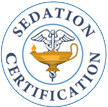Massachusetts Board of Nursing Review – June 14, 2017
Reviewed by Sedation Certification – March 9, 2023
State Sedation Policy – Yes
Can RN’s give sedation? – Yes
Can RN’s give deep sedation medications? – YES under certain conditions.
Contact the Board of Nursing if you have any questions!
https://www.mass.gov/lists/advisory-rulings-for-the-board-of-registration-in-nursing – search for AR 9101 for the orginial word document
Massachusetts Board of Registration in Nursing
Advisory Ruling on Nursing Practice
Title: Administration of Medications for Sedation/Analgesia
Advisory Ruling Number: 9101
Date Issued: 9/21/91
Date Revised: 9/26/96, 11/10/99, 6/10/09, 9/11/13, 6/14/17
Authority:
The Massachusetts Board of Registration in Nursing (Board) is created and authorized by Massachusetts General Laws (M.G.L.) c. 13, §§ 13, 14, 14A, 15 and 15D, and G.L. c. 112, §§ 74 through 81C to protect the health, safety, and welfare of the citizens of the Commonwealth through the regulation of nursing practice and education. In addition, M.G.L. c.30A, § 8 authorizes the Board to make advisory rulings with respect to the applicability to any person, property or state of facts of any statute or regulation enforced or administered by the Board. Each nurse is required to practice in accordance with accepted standards of practice and is responsible and accountable for his or her nursing judgments, actions, and competency. The Board’s regulation at 244 CMR 9.03(6) requires all nurses to comply with any other law and regulation related to licensure and practice.
Scope of Practice: Registered Nurse
Purpose:
To guide the practice of the Registered Nurse (RN) whose clinical responsibilities include the administration and management of medications intended to produce a depressed level of consciousness.
- Minimal sedation is defined by the American Society of Anesthesiologists (ASA)* as a drug-induced state during which patients respond normally to verbal commands. Although cognitive function and coordination may be impaired, ventilatory and cardiovascular functions are unaffected.
- Moderate sedation/analgesia is defined by ASA* as a drug-induced depression of consciousness during which patients respond purposefully to verbal commands, either alone or accompanied by light tactile stimulations, patients do not require intervention to maintain a patent airway, maintain adequate spontaneous ventilation, and usually do not require intervention to maintain cardiovascular function.
- Deep sedation is defined by ASA* as a drug-induced depression of consciousness during which patients cannot be easily aroused but respond purposefully following repeated or painful stimulation. The ability to independently maintain ventilatory function may be impaired and may cause spontaneous ventilation to be inadequate; the patient may require assistance in maintaining a patent airway. Cardiovascular function is usually maintained.
Advisory:
The RN licensed by the Board will engage in the practice of nursing in accordance with accepted professional standards.** The nurse must acquire and maintain necessary knowledge, skills, and abilities before assuming duties and responsibilities for administering sedation/analgesia medication as described herein.
Administration of Medications Intended for Mild to Moderate Sedation
The duly educated and qualified RN may receive, accept, and transcribe orders from duly authorized prescribers for medications that may produce minimal to moderate sedation/analgesia.
Professional standards recognize the RN as responsible and accountable for possessing the knowledge, skills and abilities to perform the activity safely, effectively and competently including, but not limited to:
- patient selection and screening;
- pharmacological selection, properties and mechanism of physiological response;
- competent and safe administration of the medication by the specified route;
- ability to anticipate, recognize and facilitate corrective action for potential complications of the medications being administrated (e.g., but not limited to, hypoventilation, hypoxia, hypotension); and
- ability to recognize and appropriately react to emergency situations.
The nurse in the management role must ensure that organizational policies include, but are not limited to:
- listing specific medications to be used for sedation/analgesia, their purpose, goals, techniques, desired outcomes, and the recommended dose per kilogram of body weight that may be safely administered by a RN, taking into account the patient’s age and co-morbidities;
- nursing care responsibilities, including, but not limited to patient assessment, monitoring, medication administration, potential complications, and documentation criteria;
- emergency protocols including, but not limited to, immediate, on site availability of resuscitative equipment, medications and personnel;
- protocols for assessing and documenting the education and validation for RN initial and continued competency; and
- protocols for provision of clear, complete and culturally appropriate informed consent.
Administration of Medications Intended for Deep Sedation
A RN who is duly educated and qualified may receive, accept, and transcribe orders from duly authorized prescribers for medications capable of producing deep sedation.
The RN may administer medications intended for deep sedation to an intubated patient as ordered by a duly authorized prescriber.
The RN may administer medications intended for deep sedation to a non-intubated patient as ordered by a duly authorized prescriber when, in addition to those measures listed above, organizational policies require:
- the registered nurse whose sole responsibility is to manage the patient’s airway does so in the presence of a provider trained in anesthesia and proficient in airway management and advanced life support; and
- uninterrupted monitoring of patient consciousness and provisions for early detection of adverse signs of deep sedation is provided by an individual with no other significant responsibilities that compromise or compete with his/her ability to continually monitor the patient.
* American Society of Anesthesiologists (ASA) continuum of Depth of Sedation: Definition of General Anesthesia and Levels of Sedation/Analgesia (Approved by the ASA House of Delegates on October 13, 1999, and last amended on October 15, 2014)
** Professional standards include, but are not limited to the following:
American Association of Nurse Anesthetists
Emergency Nurses Association https://www.ena.org/SiteCollectionDocuments/Position%20Statements/Archived/Procedural_Sedation_Consensus_Statement.pdf
American Nurses Association
Society of Gastroenterology Nurses
https://www.sgna.org/Portals/0/Education/PDF/Position-Statements/Sedation_2013-FINAL.pdf
American Association of Moderate Sedation Nurses
American College of Emergency Physicians
https://www.acep.org/clinical—practice-management/sedation-in-the-emergency-department/
American Society of Anesthesiologists
http://www.asahq.org/quality-and-practice-management/standards-and-guidelines
